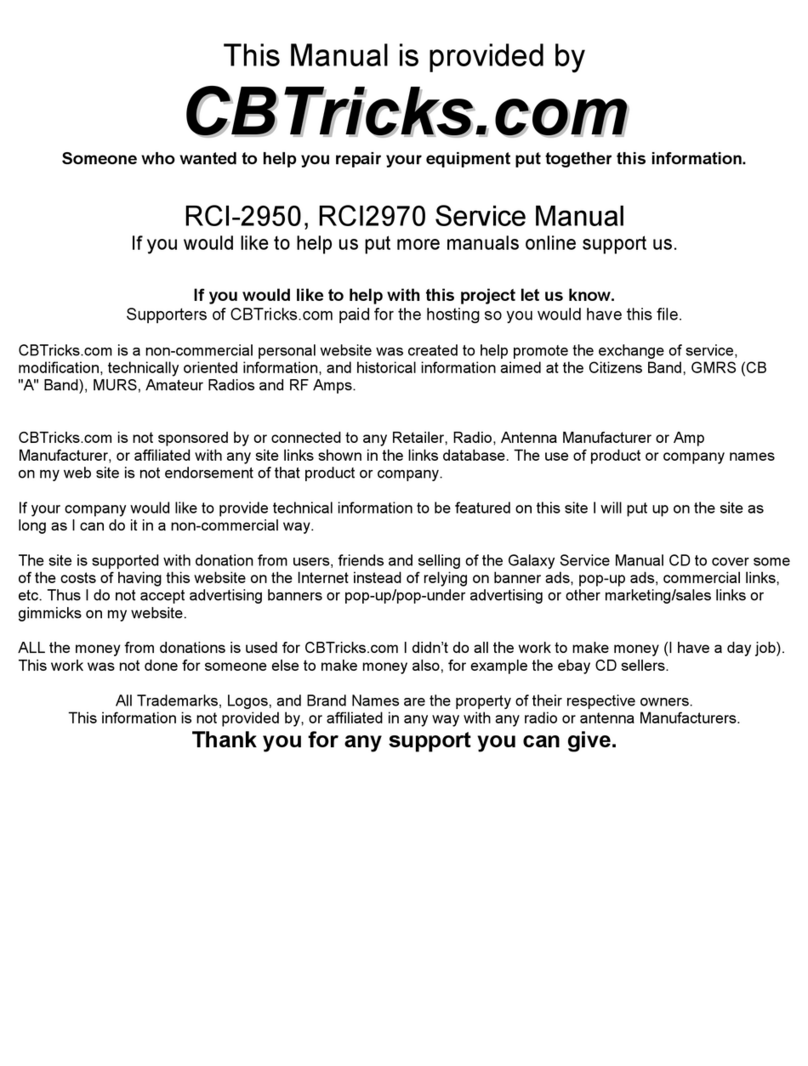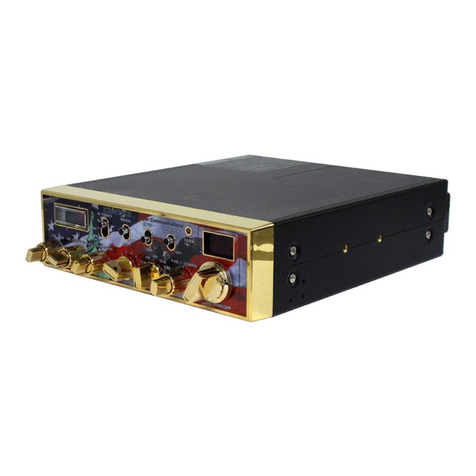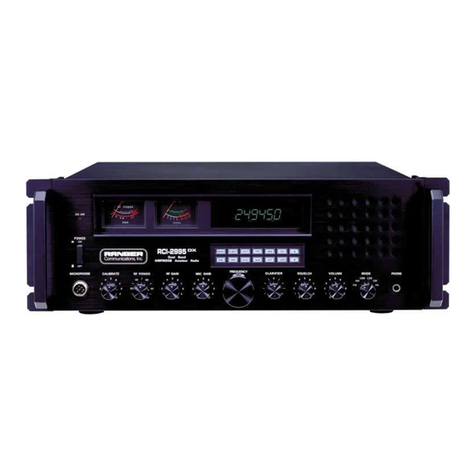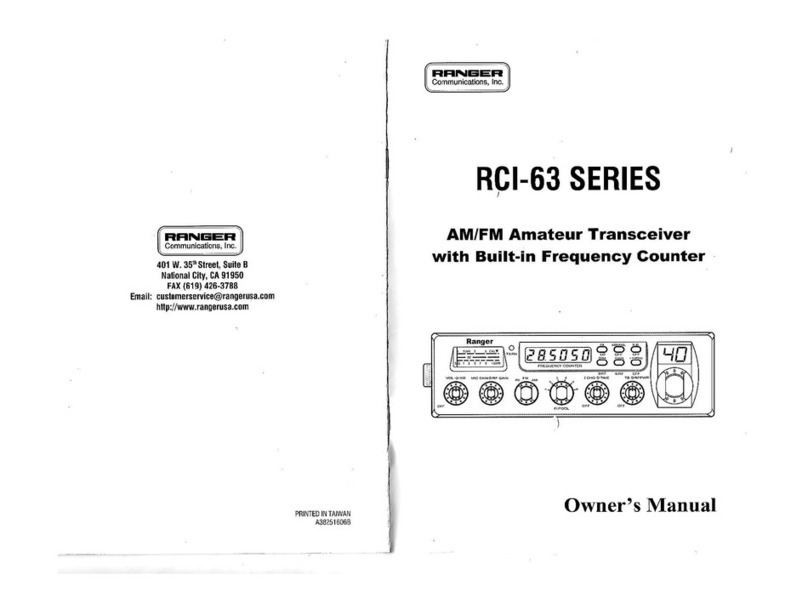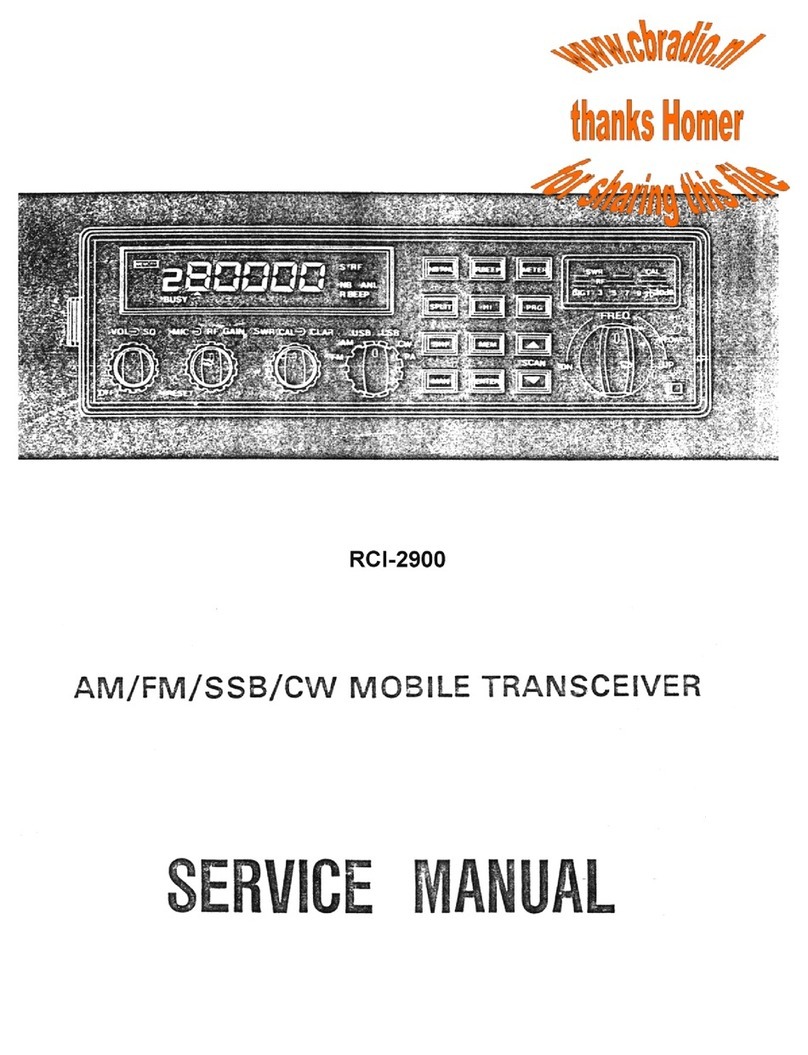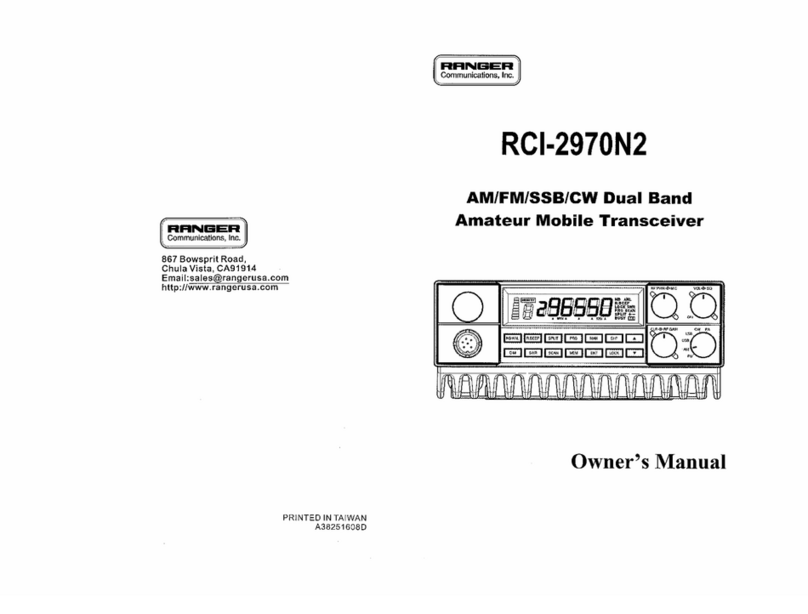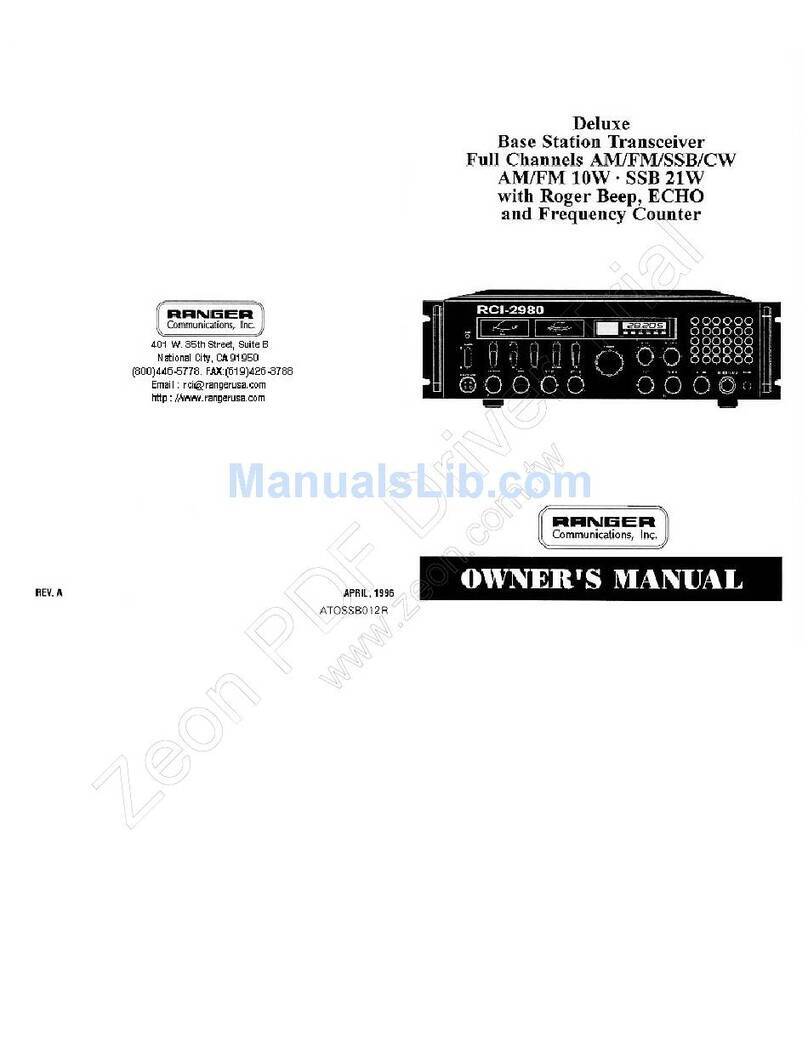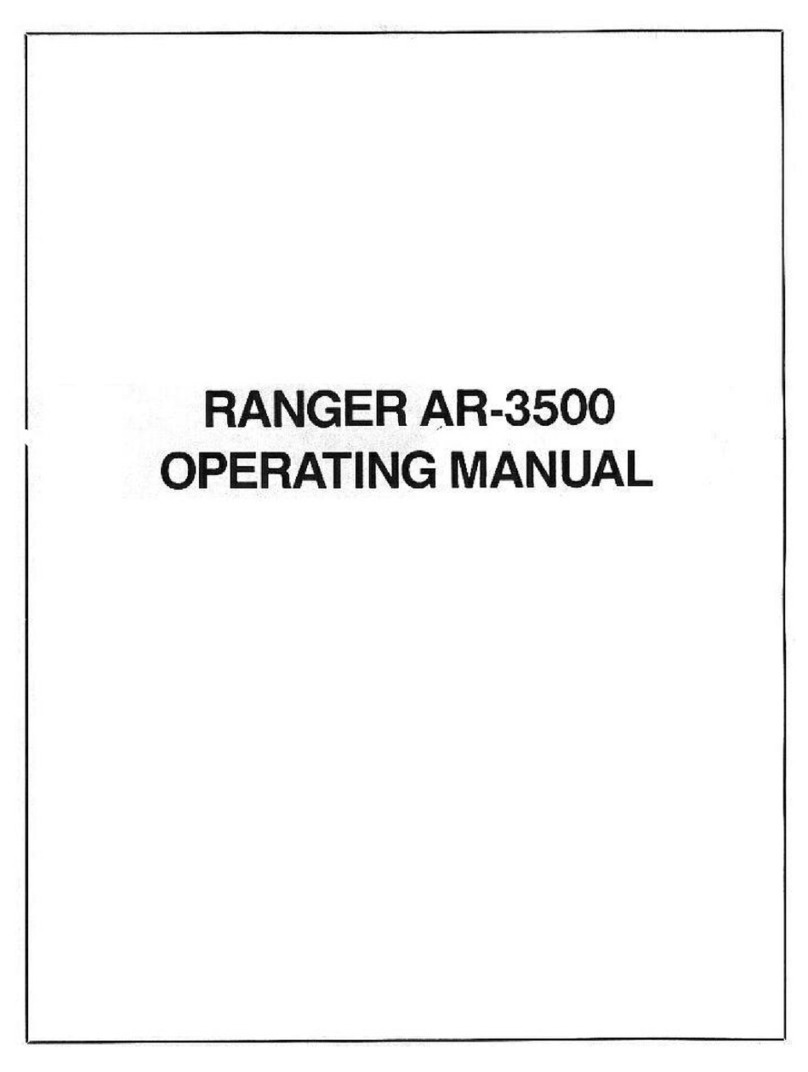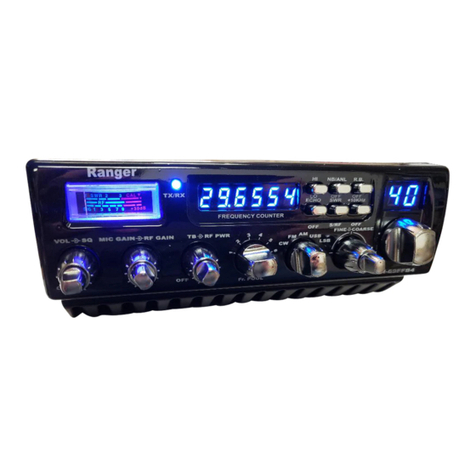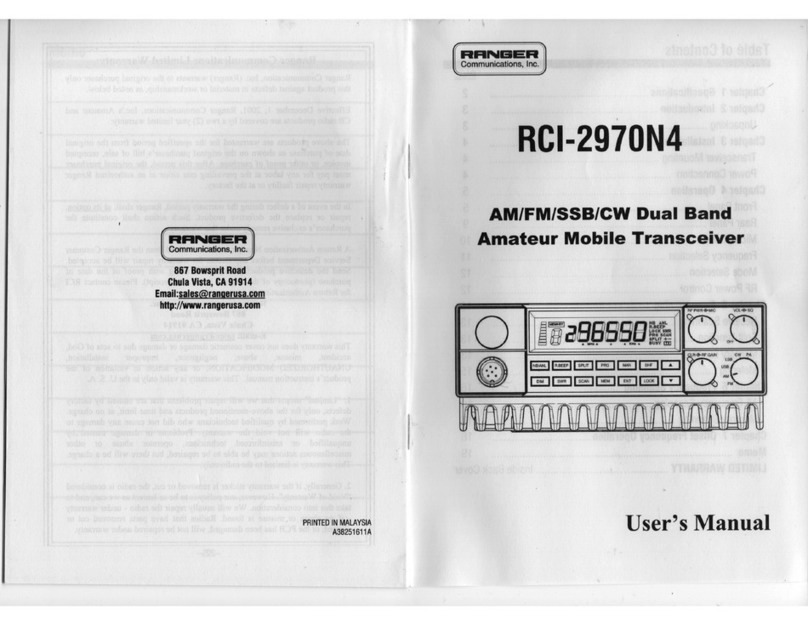
Technical Analysis of the RCI 2950, RCI 2970, RCI 2990, Saturn Turbo circuitry
The first striking element of the RCI is the complex frequency synthesizer. As most of the CB rigs use a + 10 Khz
step , the RCI uses a 100 times thinner 100 Hz step.
The brain of the RCI is the Microprocessor. The microprocessor is hold by the small board located behind the LCD
display. This board rules the rig. It is a double sided board which holds a battery, an alignment of 2.54mm
connectors, a voltage regulator (5V - MC7805) on its back. The regulator feeds all the digital components, a
network of internal resistors. On the same side of the board, you can find a buzzer and a lithium battery which is
here to keep the memories when the rig is switched off. Note that, in the latest versions of RCI rigs, the lithium
battery has been replaced by a capacitor.
The other side of the board holds 3 CMS chips, a double Op-Amp (5223), a box containing 6 inversors gates
(buffers) CD4069. This last one is controlling the 6 digits of the display. This side of the board also holds a 64
pins CMS chip, driven at 4 Mhz by a crystal, which is a CMOS circuit. It owns a ROM of 2 K, Four 4 bits registers,
a 8 bit timer, a serial 8 bits communication interface, 24 Input/Output. Everything is controlled by 10
microseconds cycles. A controller-Driver of Liquid Display Boards is supervising all the needed display cycles on
the 24 lines of the LCD segments to display the 6 numbers (7 segments by number) on the orange screen. The
microprocessor is having very low consumption characteristics: less than 900 µA.
The programming of the microprocessor is done at factory. All the functions and the frequencies range are
stored into the ROM. A jumper allows us to change the frequency range. All the main informations are send to
the frequency synthesizer by a limited amount of links: clock signals (CLK), transfers (LAT), serial data (DATA).
All these informations are not given by the schematic diagram but were useful to know. Let's pay a visit to the
main board.
The Frequency Synthesizer is complex because of the 100 Hz resolution. It owns a dozen of integrated
circuits: a programmable divider (IC17:7925 Sony) addressed in serial mode by the microprocessor, a first VCO
(IC8: TA7310 Toshiba), two phase comparers (IC5-IC7 TC5081 Toshiba), three mixers (IC9-IC10-IC14:
TA7310), an oscillator-divider driven by a 10.250 Mhz crystal. This part of the rig generates 2 different
frequencies: in RC mode to get an infradyne pulse of the first conversion (RX QRG - Interm.QRG of 10.695 Mhz)
and in TX, the necessary to produce a supradyne ( Interm.QRG of 10.695Mhz + FVCO). Depending of the TX
mode, in AM/FM, the Q44 oscillator is controlled by X3 (10.695 Mhz). In SSB and CW, there is a 1500 Hz jump
(+ 1500 Hz in USB and CW and -1500 Hz in LSB).
The transmit circuits follow the frequency synthesizer. It has a HF mixer (IC20 : SO42P Siemens). It is
adapted in large band conditions by a set of varicaps D93-D94-D95. The result of the mixing is then applied to a
band filter (L43-L46), amplifier in voltage by a transistor Q50: 2SC1730L. The output level of this TR is enough
to control the pre-driver (Q49: 2SC1973). The pre-driver, via L41, excites two finals in parallel (Q46-Q47:
2SC2312). They are followed by a low-pass filter in PI (L32-L31) and associated capacitors C243-247-251).. And
then a hi-pass filter follows (L33/C248-VC3). A line of measurement of the SWR is present in the form of a
vertical mini circuitry board, plugged between the TX output and the antenna plug. All the 3 power transistors
are biased VR11. In AM and FM, the mixer IC20 adds the VCO QRG to 10.695 (Q44). In SSB and CW, it is the
output of the crystal filter that is added.
The receiver is classical: superheterodyne with 2 IF conversions. It is very similar to the one of most cb rigs.
There are output stages: HF Amp (Q18: 2SC1674), transfo L8, first mixer Q19: 310), L9-L11 filter, the IF output
by L12,L13,L14. What strikes is the presence of varicaps D19,D23,D24 which works to produce a perfect tune in
this large band rig. The band filtering is also perfect. It is done by two combined transfos linking the HF amp to
the mixer. The ceramic IF filter FL2: 10.995 Mhz is attacked by L14. The a second stage of IF Q8 is feeding the
second IF filter FL3 455 Khz. The first following TR loads Q5. Then Q10 & Q11 produce a Hugh gain before the
first IF transfo L6. The follow AM and FM demodulators. In AM you have a diode circuit to detect and gain control
(D11-D12). The Op-Amp IC1: LM324 follows. IC2, is the discriminator (UPC1028H). It handles the FM.
In SSB, the signal from the first mixer is bandwidth reduced by FL3 then applied to the first amplification IF
stage Q20. A high gain amp follows Q21-Q22-Q23. The audio output is controlled by a classical audio amp IC19
(TA7222P)
